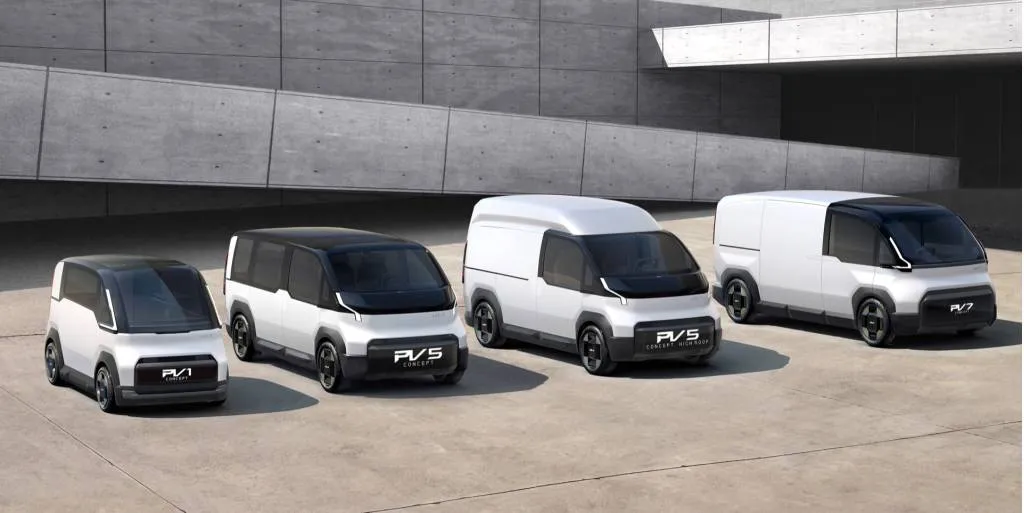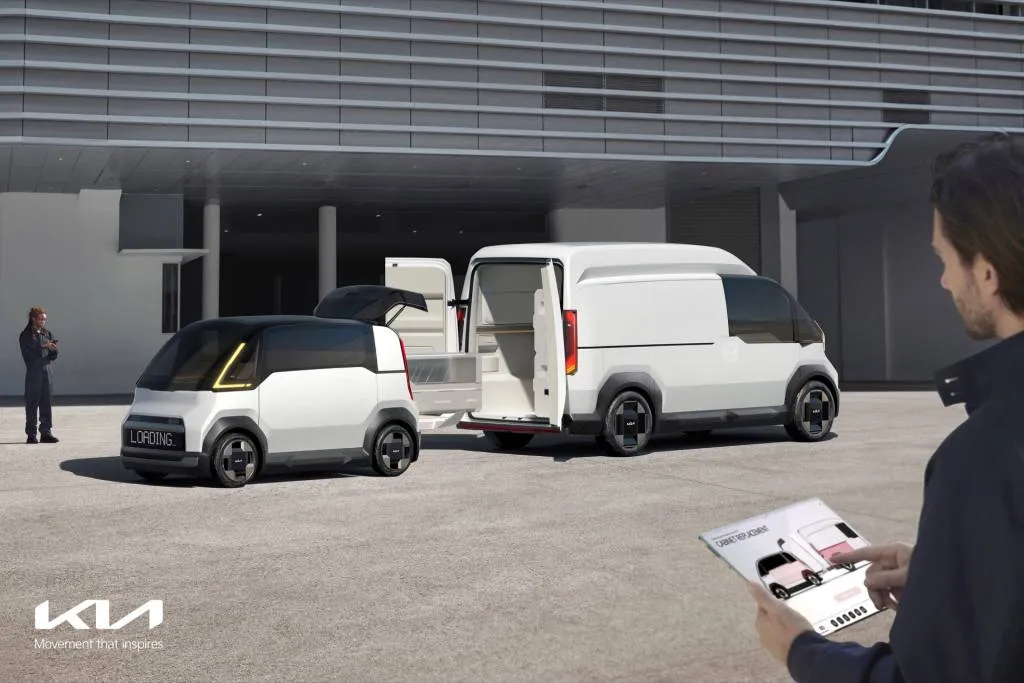Kia PBV concepts show flexible electric vans and a robotaxi

Kia has revealed much more about its Platform Beyond Vehicle (PBV) strategy, which aims to provide modular vehicles for last-mile delivery and other uses, potentially around the globe. And with Monday’s extensive update at CES in Las Vegas, there was also a glimpse of the first PBV products, which are essentially different versions of electric vans.
Since electric vehicles are intended for work and fleet use, the company plans to launch an entirely new, dedicated PBV business that will oversee products, software integration and global partnerships. This includes global conversion partners (Upfit).
While some of these ideas are already being tested with the Taxi-oriented Niro Plus In South Korea, the first production step is that of Kia dedicated PBV factoryProduction is scheduled to begin in 2025 and produce up to 150,000 vehicles annually. They will be a growing and important element as Kia aims to sell 1.6 million electric vehicles worldwide by 2030, with PBV products including one Robotaxi and autonomously capable ride-hailing vehicle.
Kicking things off is the Kia PV5, a versatile van-like vehicle suitable for ride-hailing and last-mile delivery. On the PV5, a pillarless door opening and low loading height facilitate access for cargo and passengers alike.

Kia PBV concepts
Electric vehicles looking beyond the skateboard platform?
The way these vehicles are structured and built represents perhaps the biggest departure from traditional electric vehicles and today’s fleet vehicles, with no mention of a focus on a skateboard platform. In keeping with the strategy of using a single vehicle chassis design to cover a range of needs, these vehicles would have similar “driver zone” areas, while different purpose-built bodies would be connected at the top and rear.
Additionally, the company claims that interchangeable “upper body “life modules” can be connected “via a hybrid electromagnetic and mechanical coupling technology,” effectively using the same chassis for a taxi by day, a delivery vehicle by night, and a private recreational vehicle on the weekend.
According to Kia, the structure beneath the PBV is sweat-free, allowing for plenty of flexibility in customization. Shipping in the form of a component set would help enable different layouts depending on region or purpose – which could relate to goods, personal mobility or logistics.

Kia PV5 concept
Robotaxi, large transporters, space for custom-made products
Kia plans to produce five physically defined versions of the PV5: Basic (wide double doors for cargo), Van (low with maximum height), High Roof (extended for upright loading and driver’s workstation), Robotaxi (passenger-oriented, operated with Motional) and Chassis Cab (only Chassis rails and cab, allowing for custom bodywork).
Kia expanded the vision well beyond the PV5, introducing a three-stage roadmap that “can help transform the mobility landscape.” The car manufacturer is promising more models, advanced software and tailored services.
In a second phase, Kia said PBVs would evolve into “AI-based mobility platforms that use data to interact with users and help keep vehicles up to date.”
Also as part of the second phase, Kia plans to add a larger PV7 product line as well as the smallest PV1, the latter designed “for agile, short-distance logistics transport.”

Kia PV1 concept and PV5 concept
PV1 will be a master of maneuverability
The PV1, Kia suggests, will be able to use its drive modules to minimize the turning radius in tight spaces – perhaps a hint that it could achieve something like what was recently shown Uni Wheel technology or Hyundai Mobis’ e-Corner wheel motor Setup to use.
These models may also have an integrated rail system, with “rails” for the ceiling, floor and side panels allowing even more flexibility.
Software is also an important part of the PBV implementation. Kia will help provide fleet management, inventory monitoring and efficiency-focused intelligent route planning, while the company’s charging solutions incorporate schedules and breaks tailored to different needs.
The company also showed it at CES Concept EV3 hatchback and Concept EV4 sedan models alongside the production EV6 GT and EV9 models – again supporting the idea of one of these smaller electric vehicles heading to the US.
